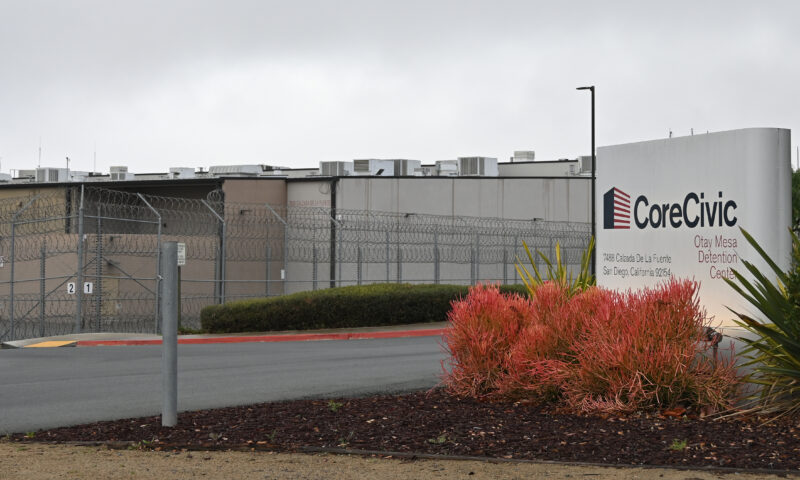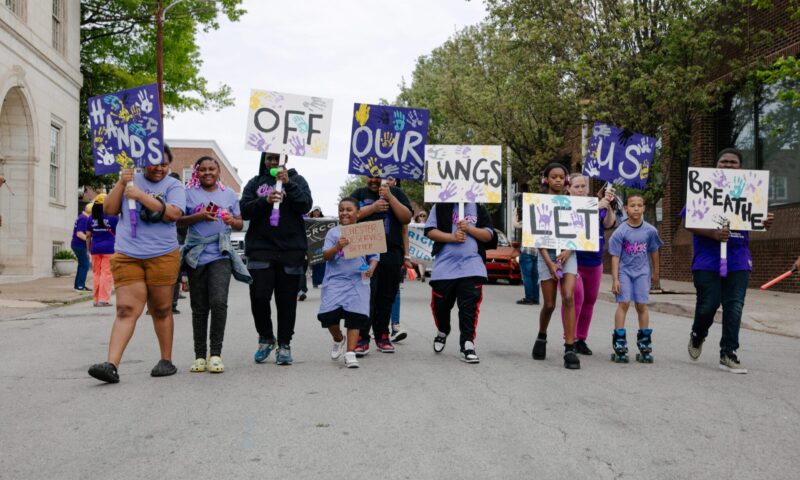Latest News
Governor’s Budget Includes Painful Cuts to Housing, Homelessness and Welfare Programs
Despite reductions to housing and antipoverty programs, Gov. Gavin Newsom maintains Medi-Cal funding.

With a $44.9 billion revenue shortfall anticipated for the next fiscal year, Gov. Gavin Newsom has indicated he’ll institute budget cuts that advocates say will severely affect the poorest Californians and hamper the state’s efforts to address its homeless and affordable housing crises.
At the same time, he is holding fast to his plan to expand Medi-Cal coverage to more Californians, a major goal for his administration.
Capital & Main identified three critical areas slated for substantial budget cuts, which will directly affect vulnerable Californians. They include programs to build more affordable housing and address homelessness, as well as the California Work Opportunities and Responsibility to Kids program, or CalWorks, which provides short-term cash assistance and services to low-income families. The governor is also looking at delaying a planned minimum wage increase for 400,000 health care employees who work in hospitals and clinics that rely on state funding. The expansion of the Medi-Cal program to cover all undocumented Californians is likely to remain in the budget.
The proposed cuts to welfare programs are tough decisions for the governor’s office, said Lee E. Ohanian, distinguished professor of economics at the University of California, Los Angeles. “The state is in real fiscal trouble,” he said. Last time the state was in a big budget deficit was around 15 years ago, he said.
In January, Newsom shared his budget proposal for the upcoming fiscal year. Last week, the governor refined his budget outlook to account for updated revenue and expenditure estimates. The state Legislature is expected to approve a budget for the state by June 15, and Newsom must sign off on it before July 1, when California’s new fiscal year begins.
LIKELY TO TOSS OR DELAY
1. CalWorks Slashed: CalWorks, the cash aid and support program for the state’s lowest-income families, appears to face severe funding cuts. The governor’s office proposes slashing the program’s budget by nearly $750 million in the coming fiscal year and draining the safety net reserve for the program. That figure comes from the California Budget and Policy Center, which provided a more detailed analysis of the cuts than what was available from state officials at press time.
The cuts were expected to affect CalWorks programs that provide mental health and substance abuse services, as well as in-home supportive services for program participants.
Dia James, an L.A.-based single mother and a victim of the 2018 Woolsey wildfire, said that without CalWorks she would still be in a shelter. The support she received from CalWorks enabled James to find child care for her son, who she said has special needs, and to get on a solid footing so she could attend classes at a community college. Now, she has her own apartment and has just been accepted to UCLA for the fall. She fears that taking away CalWorks funds will undo the progress she’s made in the last few years. “I would end up homeless again,” James said.
“If these cuts were to happen, we would see devastating consequences, because the cuts are really across the spectrum of the program,” said Andrew Cheyne, managing director of public policy at GRACE End Child Poverty Institute, an advocacy organization based in Pasadena, California. CalWorks programs facing cuts support families in “deep crisis” due to eviction, domestic violence, substance abuse and mental health issues, he said. Ninety percent of CalWorks parents are single mothers like James and are overwhelmingly Black or Latino, he added.
2. Deep Cuts to Affordable Housing, Homelessness Initiatives: Newsom has prioritized increasing the stock of affordable housing and combating homelessness in the state. But programs aimed at achieving these goals face budget cuts, and one key homelessness prevention program won’t be renewed.
Some advocates call the proposed cuts short-sighted. The governor proposes cutting $1.76 billion from the money originally intended for several programs that combat homelessness and build roads, sewer lines and other infrastructure to support affordable housing development, according to a coalition of 16 housing and homeless advocacy organizations. Programs that provide low-interest loans and grants to boost the affordable housing supply will also be cut, according to the coalition, which provided a more comprehensive analysis of the proposed cuts than what was available from state agencies at press time. The latest budget revision adds $500 million in tax credits for low-income housing for the next fiscal year.
The reductions “will end up costing California more in the long run,” said Matt Schwartz, president and CEO of the nonprofit California Housing Partnership.
In addition, the Homeless Housing Assistance and Prevention Grant Program, funded at $1 billion a year since fiscal 2021-’22, will not continue into the next fiscal year. The latest budget revision calls for a clawback of $260 million from that program. California helped more than 330,000 people experiencing homelessness find housing and receive other services last year, according to the state’s Business, Consumer Services and Housing Agency. The sudden absence of funding “leaves a funding cliff” at a time when the state’s response system is “serving more Californians than ever before,” said Monica Davalos, senior policy analyst at the California Budget & Policy Center.
Local governments will have to “make really hard choices because they no longer have the resources” to sustain programs that provide interim housing and rental assistance, said Christopher Martin, policy director at Housing California.
“One-time funding is just incredibly vulnerable to cuts,” and ongoing funding for homelessness is needed, said Sharon Rapport, director, California state policy, at the Corporation for Supportive Housing. California has made significant strides in recent years but for 40 years did virtually nothing to solve homelessness, she said. A burst of short-term funding is not going to solve homelessness, she added.
3. Health Care Worker Wage Increases Punted: Newsom has considered delaying the health care worker pay increase that would set them on a path to a $25 minimum wage over several years. The raise was mandated by legislation that the governor signed last year. The phase in of wage increases was set to begin June 1. The legislation affects more than 400,000 health care workers, whose path to $25 per hour was expected to vary, depending on the size of their employer.
The state Department of Finance estimated the wage hike will draw around $2 billion from the general fund in the next fiscal year. Most of the funding will come from spending on Medi-Cal, the state’s Medicaid program. Newsom had asked the Legislature in January to add an annual trigger to tie the health care worker minimum wage increases to general fund availability.
The University of California, Berkeley’s Labor Center projected a smaller impact from the new health care worker wage law, estimating it will cost the state in the “low hundreds of millions of dollars in fiscal 2025,” according to a report published in February.
The staffing and patient-care crisis requires the health care worker wage increase law to be implemented in full as soon as possible, said Nathan Selzer, communications director for the Service Employees International Union’s United Healthcare Workers West, which represents tens of thousands of health care workers across the state. “We also recognize in a budget deficit year compromises will be required,” he said, adding that his union and other groups were actively involved in conversations with Newsom’s administration on the possibility of a wage increase delay.
LIKELY KEEPING
4. Medi-Cal for All Maintained: Newsom is winning praise from some advocates for maintaining funding for government-funded health care for low-income undocumented Californians. But some immigrant rights groups are dismayed by other cuts to services. Two years ago, Newsom expanded the program to cover those residents of the state. At a cost of $35.9 billion from the general fund, the program is expected to help more than 15 million people this fiscal year.
Masih Fouladi, executive director of the California Immigrant Policy Center, said he was glad to see that the budget kept the state’s commitment to Medi-Cal for undocumented Californians. But the center is also disappointed with the state’s move to eliminate other programs for undocumented people, including in-home supportive services for undocumented people who are older or disabled.
California has a volatile and unpredictable tax base and relies heavily on taxes from the state’s highest-income households. When the stock market booms, taxpayers sell stocks and realize capital gains, which are taxed, increasing state revenue. During downturns or periods of inactivity in the market, “revenue dries up,” Ohanian said.
California needs to levy new taxes on services such as dry cleaning, haircutting and legal services to avoid the level of cuts the state faces this year, Ohanian said.
Kayla Kitson, senior policy analyst at the California Budget & Policy Center, would like to see the state eliminate or reduce tax breaks for corporations. They “make the state’s tax system less equitable and deprive the state of revenues that could be used to support vital public services,” Kitson said.
Copyright 2024 Capital & Main

-

 Latest NewsJune 17, 2025
Latest NewsJune 17, 2025A Coal Miner’s Daughter Takes on DOGE to Protect Miners’ Health
-

 Beyond the BorderJune 10, 2025
Beyond the BorderJune 10, 2025Detained Man Says ICE Isn’t Treating His Colon Cancer
-

 Column - State of InequalityJune 12, 2025
Column - State of InequalityJune 12, 2025‘Patients Will Suffer. Patients Will Die.’ Why California’s Rural Hospitals Are Flatlining.
-

 Featured VideoJune 10, 2025
Featured VideoJune 10, 2025Police Violently Crack Down on L.A. Protests
-

 Column - California UncoveredJune 18, 2025
Column - California UncoveredJune 18, 2025Can Gov. Gavin Newsom Make Californians Healthier?
-

 The SlickJune 6, 2025
The SlickJune 6, 2025Pennsylvania Has Failed Environmental Justice Communities for Years. A New Bill Could Change That.
-

 Latest NewsJune 6, 2025
Latest NewsJune 6, 2025Trump Won Big in Kentucky. Medicaid Cuts Could Hit It Hard.
-

 Latest NewsJune 6, 2025
Latest NewsJune 6, 2025Before Attacking Each Other, Musk and Trump Struck Blows Against Veterans, Children, the Hungry and the Sick

